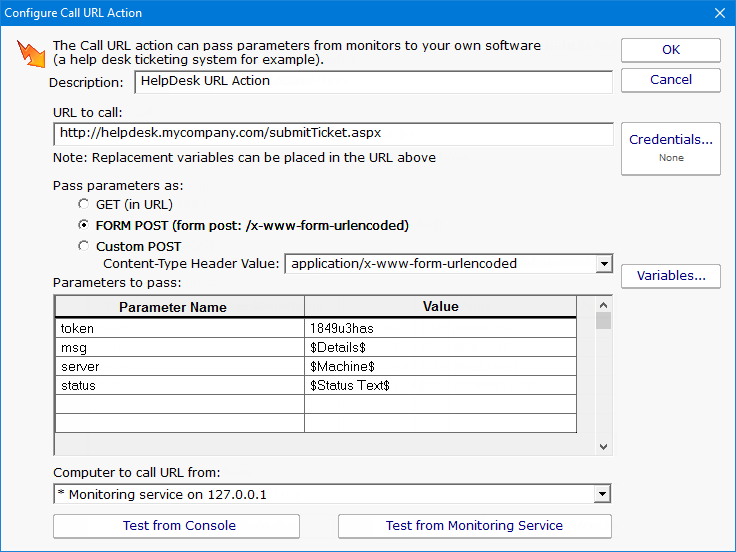- Solutions
-
- File Server: Ransomware Protection
- File Server: File Copy
- File Server: Audit File Access
- File Server: Storage growth reporting
- Licensing/Pricing
- Contact
This action will call a URL that you specify, possibly passing additional information about the alert via GET or POST variables.

Specify the URL to call, and whether it should be called with GET (with parameters added to the URL), or with POST (with parameters being form posted).
Specify any additional parameters that you want added in the field list below. The Parameter Name should be something the web page is looking for, and the parameter value can be whatever value you want. Click the Variables button to see a list of replacement variables that can be used for passing information about the alert to the web page.

Click on the Credentials button to enter the username and password credentials for the website.
When you press one of the Test buttons, the appropriate HTTP request is built (with parameters appended to the URL, or built into a form post) and sent to the web page. One caution for the GET setting -- most web servers have a limit on the amount of data that can be sent via a GET request. A 2KB limit is not uncommon.